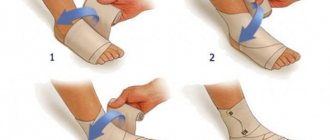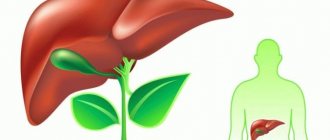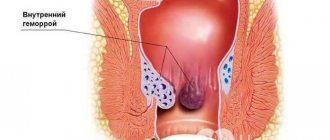It is necessary to know how first aid is provided for injuries and wounds of the abdomen in order to prevent possible complications and even save a person’s life. Abdominal wounds are considered very dangerous injuries, the consequences of which can be fatal.
A person can face a variety of injuries, and it is very important to provide first aid to the victim in a timely manner and take him to the hospital. Most often in traumatology, injuries caused by excessive external mechanical impact are observed.
Classification
There are closed and open abdominal injuries. Based on the method of injury, several types of such injuries are distinguished. The main types of abdominal wounds include the following:
- injury;
- compression of soft tissues and internal organs;
- abdominal rupture or injury;
- with the presence or absence of damage to internal organs.
If the victim has no injuries in other parts of the body, then this injury is called isolated.
Also, isolated wounds can be multiple, for example, in the case of a bullet or knife injury, when several blows are applied to one area. The severity of the injury depends on how deep the weapon entered the peritoneum and whether it touched the abdominal wall. If the victim also has damage in another area of the body, then this injury is called combined. A combination of abdominal wounds and traumatic brain injuries or fractures of arms and legs can often be observed. If a person suffers a serious concomitant injury along with a wound to the stomach, this can lead to significant consequences for the entire body.
The most severe among the combined injuries is considered to be a wound to the abdomen and damage to the chest of the cage. In this case, a person is not able to breathe fully, which significantly reduces the level of oxygen in his body. This significantly affects the general condition of the victim and can lead to serious complications. When providing medical care, doctors first try to restore the functioning of the respiratory system and only then turn their attention to other injuries.
It is worth noting the likelihood of combined injuries, for example, a wound to the stomach and an electric shock, burn or frostbite. When the victim has serious abdominal injuries, which are accompanied by other injuries, treatment should be carried out strictly in a hospital setting under the supervision of medical staff. The speed and correctness of providing emergency care to a wounded victim can play a big role.
First aid for bleeding
Bleeding usually occurs when there is any damage to the tissues of our body. This is the process of bleeding from a ruptured vessel. It can be capillary, venous or arterial.
With deep wounds, arterial bleeding may occur, and this is the most dangerous.
First aid in this case is to apply a tourniquet or twist. It is applied above the wound so as to compress the bleeding vessel. In this case, the limb needs to be raised and made several turns. The bleeding should stop.
It is imperative to indicate the time for applying the tourniquet and loosen it every 20 minutes until blood circulation is restored. The tourniquet can be applied for no more than 1.5 hours in the warm season or 1 hour in winter. During this time, the victim must be sent to the hospital.
Venous bleeding occurs when the walls of the veins are damaged; it can be stopped by raising the limb and bending it at the joint as much as possible. A sterile, pressure bandage will be sufficient. A tourniquet should not be used for venous bleeding.
Capillary bleeding can also be stopped by applying a sterile, pressure bandage. Sometimes it is enough to treat the wound and use an adhesive plaster.
Open wounds
Most often, people receive open abdominal injuries under the following circumstances:
- cold steel;
- shell fragments;
- firearms.
Open abdominal injuries with bladed weapons can be stabbed, torn or cut. This injury is characterized by minor external damage to soft tissues with fairly deep internal penetration. The wound itself does not cause excessive bleeding, but internal organs may be susceptible to injury, as a result of which the person ends up in an extremely serious condition, even death. In this case, medical care for an abdominal injury should be provided as quickly as possible, so the sooner the victim is taken to the hospital, the greater his chances of a successful recovery.
Causes
Gunshot wound
Also known as ballistic trauma
– a type of wound that occurs as a result of the use of firearms or ammunition explosions. The most common forms of ballistic injury occur from firearms used in armed conflicts, civilian sporting events, recreational activities, and criminal activities. Damage depends on the type of firearm, bullet, speed, entry point and trajectory.
As the projectile passes through body tissue, it slows down, dissipating and transferring kinetic energy to surrounding tissue. The speed of the projectile is a more important factor than its mass. Kinetic energy increases as the square of the speed. That is, an increase in speed of 2 times leads to an increase in kinetic energy of 4 times. In addition to injuries caused directly by an object penetrating the body, secondary injuries may occur, for example, due to an explosion. The projectile path can be estimated by imagining a line from the entry wound to the exit wound, but the actual trajectory may differ due to rebound or differences in tissue density.
Stab wounds
A puncture wound is a specific form of penetrating trauma that can be caused by the use of a knife or other sharp object. Although puncture and slash wounds are typically caused by a knife, they can also be caused by other implements, including shards of broken bottles or ice chips. Most impacts occur as a result of intentional violence or suicide attempts. With cuts, discoloration and swelling of the skin from the impact occurs due to rupture of blood vessels, leakage of blood and fluid, and other injuries that impair circulation.
Closed abdominal injuries
With a closed abdominal injury, the skin remains unharmed, but abrasions, hematomas and bruises can be observed on the skin.
Blunt abdominal trauma usually occurs due to a forceful blow to the area, which can occur under a variety of circumstances:
- during a fight;
- when playing sports;
- in domestic conditions;
- while working in production, etc.
Such damage also poses a great danger, since during an external examination it is difficult to determine the degree of damage to internal organs.
Classification
Closed abdominal trauma has a certain classification depending on the nature of the injury. Closed abdominal injuries include:
- Damage to the abdominal wall;
- Abdominal injuries;
- Faces of the retroperitoneal space.
Symptoms of abdominal injury
Wound dressings are applied for penetrating abdominal wounds, and first aid begins by classifying the injury based on the signs observed.
Symptoms of open abdominal trauma:
- bleeding out;
- release of intestinal contents;
- organ prolapse;
- cutting pain.
Signs of a closed abdominal injury: abdominal pain of varying nature and intensity, pallor, lethargy, low blood pressure, increased heart rate, flatulence, muscle tension, intestinal cuts, nausea, vomiting. A person’s condition when injured is serious, requiring immediate assistance and, in some cases, emergency surgery.
First aid and treatment
When an injury occurs during an accident or other circumstances, the victim must be provided with emergency care and hospitalized at the nearest trauma center.
To provide first aid for an abdominal injury, you need to do the following:
- if the damage is serious, first call an ambulance;
- alleviate the victim’s condition with painkillers;
- You can also reduce pain and reduce swelling by applying cold to the site of the injury;
- in case of open damage, the edges of the wound must be treated with an antiseptic;
- if heavy bleeding is observed, it should be stopped using a sterile gauze bandage.
In the hospital, the patient is examined by a doctor and diagnosed. If the injury is open, determining the exact clinical picture is not difficult. Closed injuries require careful examination and ultrasound diagnostics. Further treatment depends on the condition of the victim, the nature of the injury and the severity. It can be operative, conservative and rehabilitative. Before choosing a treatment method, the doctor must monitor all systems of the human body.
During the surgical procedure, a vertical section of the abdomen is performed, after which an audit of the consequences of abdominal trauma or surgery on damaged organs is performed. Often, abdominal injuries can be accompanied by traumatic shock, so before the operation the victim must be removed from this state.
After the operation, there comes a turn of conservative treatment with medications and a long rehabilitation period, during which the patient may remain in a hospital for several months. At the end of treatment, the patient is discharged home, but for some time he will not be allowed to lift heavy objects or overexert himself too much. Also, in case of abdominal trauma, it is recommended to follow a special diet that helps restore the functionality of the affected organs.
Providing first aid for a bite wound
Bites from animals, insects and reptiles are quite common. This is one of the most dangerous types of wounds, since animals, for example, have a very large number of microbes on their teeth and mouths. But bites from poisonous snakes and spiders are especially dangerous. In such cases, the main thing is to provide first aid as quickly as possible and take the victim to a medical facility.
If it is a bee sting, you must carefully remove the sting, then treat the bite site with an antiseptic. In this case, it is better to choose one that contains alcohol.
If you are bitten by a poisonous snake, you must cover the wound with a sterile bandage and urgently take the victim to the hospital. Doctors recommend applying ice to the bite site and bandaging the limb with a tourniquet so that the poison does not have the opportunity to quickly spread throughout the body.
No matter what type of wound, it may bleed heavily. In this case, it is necessary to stop the bleeding before providing further assistance. We'll talk about this further.
Head Injury Clinic
Brain concussion. This is the most common head injury, occurring in 80% of cases. No macrostructural pathology is detected, and damage is observed only at the cellular level; therefore, concussion is a functionally reversible form. The patient is unconscious for several seconds or minutes with amnesia, and is also characterized by nausea and vomiting. After the patient regained consciousness, he complained of dizziness, diffuse headache, double vision, and sweating. Vital functions are not impaired. Minor neurological disorders manifest themselves in the form of asymmetry of tendon reflexes, small-scale nystagmus, which disappear after a week. The patients' condition improves significantly during the first week, and CT and MRI do not reveal any pathology.
Brain contusion. With this pathology, unlike a concussion, there is gross macrostructural damage to the brain substance in the form of hemorrhage and destruction. Subarachnoid hemorrhage is a “companion” of such injuries. Fractures of the skull bones are also no exception for them, and the severity of the patient’s condition directly depends on the severity of these manifestations. One of the main symptoms is edema-swelling of the brain substance. The following types of damage are distinguished:
- mild severity. Patients may be unconscious for about 20 minutes. Complaints typical for head injuries are nausea, vomiting, dizziness, and diffuse headache. Retro- and anterograde amnesia is noted. Vital functions are not significantly impaired; changes in the cardiovascular system appear in the form of bradycardia and hypertension. Neurological symptoms manifest themselves in the form of pyramidal insufficiency, mild anisocoria, clonic nystagmus.
- moderate severity. The patient is unconscious for several hours. After the patient regains consciousness, repeated vomiting, severe amnesia, and mental disturbances appear. Violations of vital functions manifest themselves in the form of persistent bradycardia, hypertension, tachypnea without obstruction of the airway. The neurological status includes nystagmus, asymmetry of muscle tone and tendon reflexes, meningeal symptoms and pathological signs. Focal symptoms are presented in the form of pupillary and oculomotor disorders, paresis of the limbs, and speech impairment.
- severe severity. The patient remains in a coma for a long time (if he does not die) - several weeks. Vital functions are grossly impaired and pose a significant threat to life. Stem symptoms come to the fore in the form of floating movements of the eyeballs, disturbances in the rhythm and frequency of breathing, bilateral mydriasis or miosis, divergence of the eyeballs vertically or horizontally, hormotonia, pathological foot signs, paresis of the limbs, convulsive seizures are possible. Such patients are in a deep coma and the prognosis for life is very often unfavorable. With such brain contusions, fractures of the skull bones and massive subarachnoid hemorrhages are noted.
CM. SEE ALSO: Symptoms of a concussion in a child
Compression by intracranial hematomas. Hematomas form above or below the dura mater as a result of depressed fractures of the skull bones. Clinically, they manifest themselves as a brain contusion, but have their own characteristics. After the patient regains consciousness, a so-called “bright period” is possible, when he feels better for a while, but as cerebral edema progresses and its dislocation, the patient again plunges into a coma.











